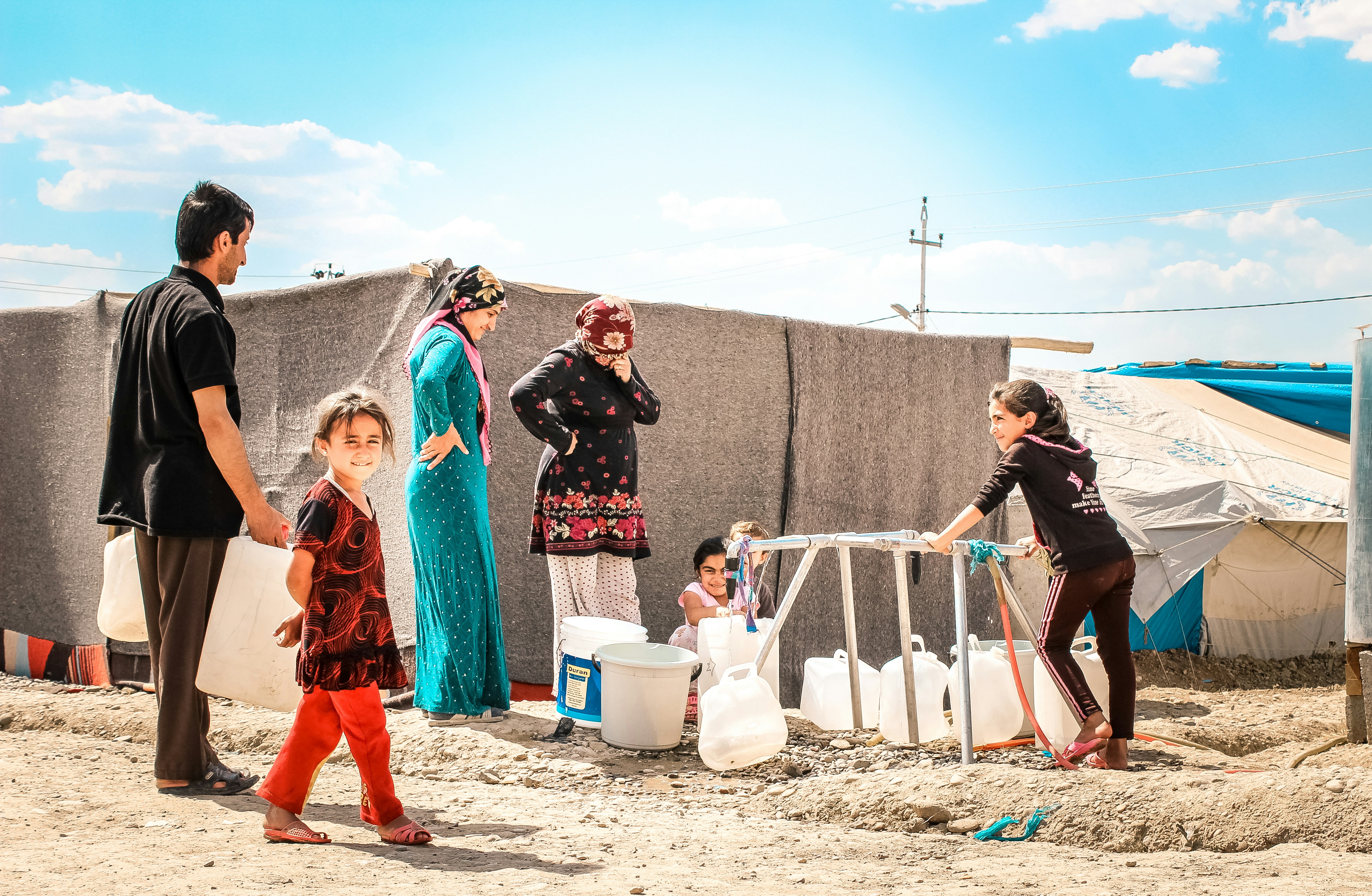The Unthinkable: A Swiss Village Buried Under a Glacier Collapse

Photo by Yosh Ginsu on Unsplash
Introduction
The recent incident of a Swiss village being buried under a glacier collapse has left the world in shock, showcasing the vulnerability of communities situated in proximity to unstable glacial formations. This tragic event occurred in the picturesque Alps, a region renowned for its breathtaking landscapes and flourishing tourism. The village, nestled against the backdrop of towering peaks and extensive ice fields, enjoyed a serene existence until the catastrophic event unfolded.
For centuries, the village had thrived, its residents engaging in agriculture, mountaineering, and hospitality, drawing visitors to experience its unmatched natural beauty. However, as climate change accelerates the melting of glaciers, the risks associated with living in such close proximity to these colossal ice masses have been amplified. Scientists have long warned that the retreat of glaciers worldwide could pose significant hazards, including increased landslide risks and sudden collapses, sparking widespread concern among environmentalists and local authorities alike.
The glacier collapse, an event characterized by the sudden release of ice and debris, occurred without warning, transforming the tranquil landscape into a scene of utter devastation. The force of the collapsing glacier caused an avalanche of ice, snow, and rock that engulfed the village, interrupting the lives of its inhabitants and forever altering its history. Emergency response teams and rescue operations were mobilized immediately, demonstrating the urgency and seriousness of the situation, as efforts to locate and assist those trapped began. The distressing aftermath highlights not only the immediate human toll but also raises critical questions regarding community safety and environmental stewardship in mountain regions where Swiss glacier collapses have become an alarming reality.
The Glacial Disaster Unfolds
On a fateful Wednesday, the tranquility of a picturesque Swiss village was shattered by a catastrophic event that will be etched in the annals of natural disasters. It was early in the morning when a deafening roar disrupted the peaceful ambiance, signaling an unprecedented incident—a significant glacier collapse. This unpredictable occurrence resulted in massive blocks of ice detaching from the glacier, hurtling towards the valley below, creating chaos and fear among the residents who were blissfully unaware of the impending catastrophe.
Witnesses described the moment as surreal, comparing the colossal disintegration of ice to the impact of an atomic bomb explosion, a descriptor that captures the sheer magnitude and destruction of the event. As the ice broke away, immense clouds of debris and snow erupted into the air, obscuring the landscape and transforming the serene environment into a scene of turmoil. The sound of the glacier crumbling echoed across the mountainsides, sending shockwaves through the surrounding areas and prompting immediate evacuations.
In the aftermath of the glacier collapse, panic ensued as residents scrambled for safety. Emergency response teams were mobilized to assess the damage and aid those in need. The village, once a hub of activity and warmth, became a ghost town, eerily silent save for the residual sounds of settling ice. Roads were blocked, and power lines severed, isolating the community from outside assistance. Local authorities worked diligently to establish contingency plans, facing the daunting task of navigating the ramifications of this glacial disaster.
As the dust settled, the event served as a stark reminder of nature’s unpredictable power. The terrifying reality of swiss glacier collapses emphasizes the need for preparedness and awareness, prompting discussions regarding climate change influences on glacier stability. The echoes of that fateful Wednesday will linger, a reminder of both the beauty and ferocity of our natural world.
Immediate Response and Evacuation
In the wake of the catastrophic swiss glacier collapses, the initial response from local authorities was swift and multifaceted, reflecting the urgency of the situation and the need to safeguard the lives of the residents. As soon as predictions indicated potential instability in the glacier, emergency services were placed on high alert. The alarming forecasts from scientists regarding the imminent risk prompted rapid evacuation protocols, ensuring that every minute counted. Local officials, in collaboration with disaster response teams, commenced a thorough assessment of the area and began notifying residents of the impending danger.
The evacuation process faced significant logistical challenges, primarily due to the remoteness of the village and the unpredictable nature of the environment. As heavy clouds loomed overhead, authorities worked meticulously to establish secure routes for evacuation. Residents were instructed to gather essential belongings and prepare for immediate departure. In tandem with the resident evacuations, special considerations were made for livestock that comprised a crucial part of the community’s livelihood. The coordination of airlifting animals added complexity to the operation, necessitating precise planning and execution to ensure their safe transportation away from the potential disaster zone.
Rescue helicopters soared into the skies, maneuvering through treacherous conditions to transport not only families but also their animals, showcasing the depth of commitment from the authorities to preserve both human and animal welfare. Despite the severe constraints posed by the terrain and the weather, teams remained resolute, demonstrating resilience in the face of adversity. This multifaceted evacuation effort underscored the critical role of preparedness in the face of natural disasters, particularly when anticipating events as devastating as glacier collapses. Authorities continued to monitor the glacier closely, integrating real-time data to evaluate the ongoing risk to ensure the community’s safely long after their retreat.
Scientific Predictions and Warnings
The phenomenon of glacier collapses has been a subject of growing concern among scientists, particularly in the Swiss Alps where warming temperatures have led to significant environmental changes. Experts in glaciology and climate science have consistently warned of the escalating risk associated with glacial instability, citing indicators such as increased rockfalls and ice fragmentation. These warnings have gained urgency as global climate patterns shift, resulting in accelerated glacial melt and structural weakening.
Prior to the devastating event that led to the burial of a Swiss village, scientists had observed a notable increase in rockfalls around the affected glacier. Such geological events serve as critical warning signs, signaling potential instability and the likelihood of a larger collapse. Researchers have documented that the rising temperatures in the region have contributed to a higher frequency of unstable slopes and glacial retreat, which are direct precursors to more significant calamities like swiss glacier collapses.
In addition to environmental observations, various predictive models have been employed to assess the future stability of glaciers in the area. These models integrate historical data with current climatic trends to forecast potential disasters. As these predictions showed alarming trends, local authorities were urged to take precautionary measures. Unfortunately, the combination of natural phenomena and insufficient preparedness may have contributed to the tragic outcome.
Scientific bodies and experts have underscored the necessity for constant monitoring and comprehensive risk assessments to mitigate the impact of such disasters. Enhanced surveillance systems, including remote sensing technologies, can provide real-time data on glacier conditions, helping to inform communities in vulnerable areas. Such initiatives are crucial for protecting lives and preserving the environment in a landscape that remains increasingly threatened by glacial instability and the impacts of climate change.
Community Impact and Resilience
The recent catastrophic event involving the collapse of a glacier has profoundly impacted the small Swiss village, home to approximately 300 residents. The emotional toll on the community is unfathomable, as many have lost loved ones, cherished homes, and their sense of security. The images of destruction caused by the swiss glacier collapses have scattered ripples of grief throughout the region, altering the social fabric of the village irrevocably.
As the news spread about the glacier’s failure, residents experienced an immediate sense of shock and disbelief. The once vibrant community, thriving in its picturesque surroundings, is now faced with an emotional upheaval. Mourning those lost and grappling with the aftermath of the natural disaster, villagers have found solace in mutual support. Local gatherings and memorial services provide platforms for individuals to share their grief, ensuring that the memory of the lost and the events surrounding the tragic collapse remain at the forefront of their collective consciousness.
Coping mechanisms have varied across the community, with some individuals actively participating in volunteer efforts to aid recovery and support displaced families. The united front demonstrates resilience, as residents come together to share resources and provide comfort. This collaborative spirit is crucial not only for immediate recovery but also for long-term rebuilding efforts. As the community looks toward the future, discussions surrounding the reconstruction of homes and infrastructure offer a glimmer of hope amidst the devastation wrought by the glacier collapse.
In the wake of this catastrophic event, it is essential for the villagers to acknowledge their trauma while also fostering a vision for recovery. Planning and support initiatives aimed at rebuilding can help restore normalcy, gradually allowing the community to heal. The emotion-laden journey of coping and resilience in the face of such impactful disaster will undoubtedly shape the narrative of this once-thriving Swiss village for generations to come.
Eyewitness Accounts and Reactions
The recent incident of the Swiss glacier collapse has left an indelible mark on the lives of those who witnessed it firsthand, as numerous individuals share their personal accounts of the terrifying moment. Residents of the nearby village, initially captivated by the majestic beauty of the glacier, were abruptly thrust into chaos when a significant portion of ice broke away. One local resident, who had spent years admiring the landscape, recounted hearing a thunderous roar, an eerie sound that signaled impending disaster. As the ice plummeted down the mountainside, the ground shook with such force that many feared for their lives.
Survivors describe the scene as surreal, caught between disbelief and instinctual reactions. A teacher from the village, who was supervising a school trip, spoke about the panic that erupted among the children. Instinctively, she gathered her students and led them to safety while repeatedly glancing back in shock as the glacier collapsed, swallowing trees and rocks. “It was as if time stood still,” she shared. “I couldn’t comprehend that something so powerful was happening right before our eyes.” This sense of disbelief permeated throughout the community as the enormity of the situation sunk in.
In the aftermath, many residents reported feeling a mix of fear and sorrow. The landscape they once cherished now bore the scars of devastation. Another witness, a local shop owner, described how the collective emotion shifted from shock to a strong desire to support one another as they processed the trauma together. The shared human experience of witnessing the Swiss glacier collapse developed a bond among the villagers, fostering a sense of unity in the face of adversities. These firsthand accounts illustrate the profound impact such disasters can have not just on the environment, but on the people whose lives are irrevocably altered by them.
The Role of Climate Change
The alarming phenomenon of swiss glacier collapses can be closely attributed to the ongoing impacts of climate change. As global temperatures continue to rise, the stability of glaciers around the world, including those in the Swiss Alps, is increasingly at risk. According to scientific data, the average temperature in the Alps has risen significantly over the past few decades, leading to accelerated melting and destabilization of these massive ice formations.
Experts in glaciology emphasize that warm temperatures not only increase the rate of surface melting but also contribute to disturbances at the glacier’s base. As meltwater accumulates, it forms pools that can lubricate and weaken the ice, ultimately leading to collapses. This cascade effect has been observed in various glaciers across Switzerland, with recent events exemplifying the unpredictability and danger associated with unstable ice masses.
The role of climate change in influencing glacier behavior is further illustrated by increased rainfall patterns. While precipitation is vital for replenishing glaciers, excessive rainfall, coupled with rising temperatures, can lead to a rapid melting process, heightening the risks of glacier failure. Geophysical studies indicate that the more frequent shifts in weather patterns and prolonged heat waves contribute to the structural weaknesses seen in these glaciers, increasing the likelihood of catastrophic events.
Furthermore, researchers have noted a concerning trend: the glaciers of the Swiss Alps are not only diminishing in mass due to melting but are also experiencing an increase in the frequency of collapses related to this phenomenon. The correlation between climate change and the instability of these glaciers cannot be overstated. In conclusion, understanding the intricate relationship between climate conditions and the behavior of ice formations is crucial for forecasting future events such as swiss glacier collapses, as it holds vital implications for local environments and communities.
Long-Term Consequences for the Ecosystem
The recent swiss glacier collapses have triggered significant changes in the local ecosystem, which will unfold over time. This environmental phenomenon disrupts habitats and alters the very landscape, with immediate effects that could persist for decades. One of the most noticeable impacts is the removal of vegetation. As glaciers collapse, the ice and debris cover areas that were once rich with plant life. This destruction means that the food supply for various herbivores, such as deer and smaller mammals, is drastically affected, potentially leading to a decline in their populations.
Moreover, soil erosion becomes a critical concern following such an event. The intense melting and subsequent collapse can lead to increased sediment runoff into nearby water systems, muddying water bodies and affecting aquatic life. The erosion not only removes topsoil but also displaces plant species, preventing them from re-establishing themselves in the affected areas. This reduction in soil quality could result in a long-term shift in plant diversity, with more resilient but less diverse species taking root. As a result, the stability of the entire ecosystem may be compromised, necessitating a lengthy process of ecological recovery.
Additionally, the alteration of local wildlife habitats can have a cascading effect. Many species rely on specific habitats that may be lost or irrevocably changed due to a glacier collapse. Animals might be forced to migrate to new areas, which may not provide the same resources or shelter. The disruption of migratory patterns can lead to increased competition for dwindling food sources, resulting in adverse consequences for the biodiversity of the region.
These ecological shifts highlight a pressing need for environmental monitoring and research to understand the full scope of the aftermath stemming from the swiss glacier collapses. Long-term studies will be crucial in revealing the potential pathways for ecological recovery and species adaptation in the face of such dramatic changes.
Lessons Learned and Future Preparedness
The recent swiss glacier collapses have underlined the critical need for improved monitoring systems and robust preparedness strategies in alpine regions. As climate change continues to impact glaciers, understanding their dynamics becomes increasingly vital. One of the primary lessons from this disaster is the importance of implementing real-time monitoring technologies that can detect changes in glacial stability. Utilizing satellite imagery, drone surveillance, and ground sensors can provide data to identify early signs of potential collapses, allowing officials to act swiftly to mitigate risks.
A comprehensive risk assessment framework is essential for identifying vulnerable communities and infrastructure located near glaciers. Engaging local populations in risk awareness and disaster preparedness programs is also crucial. Residents living in these areas should be educated about the risks associated with glacier activity, including the potential for sudden collapses. Community drills and clearer evacuation plans can significantly enhance safety in the event of another disaster.
Moreover, ongoing collaboration between scientists, engineers, and policymakers can foster the development of innovative solutions tailored to mitigate the impacts of glacier collapses. This might include constructing barriers or creating safe zones around at-risk settlements. Investment in research is paramount, as it can lead to new technologies and methodologies to predict glacial movements more accurately.
Furthermore, legislative measures may be required to regulate land use in alpine areas. Strict building codes and land use regulations can help ensure that structures are resilient to natural disasters. In summary, the swiss glacier collapses serve as a stark reminder of the urgent need for enhanced monitoring, preparedness, and risk mitigation strategies in vulnerable alpine regions. By taking proactive steps, communities can better protect themselves against the potential dangers posed by glaciers in the future.






